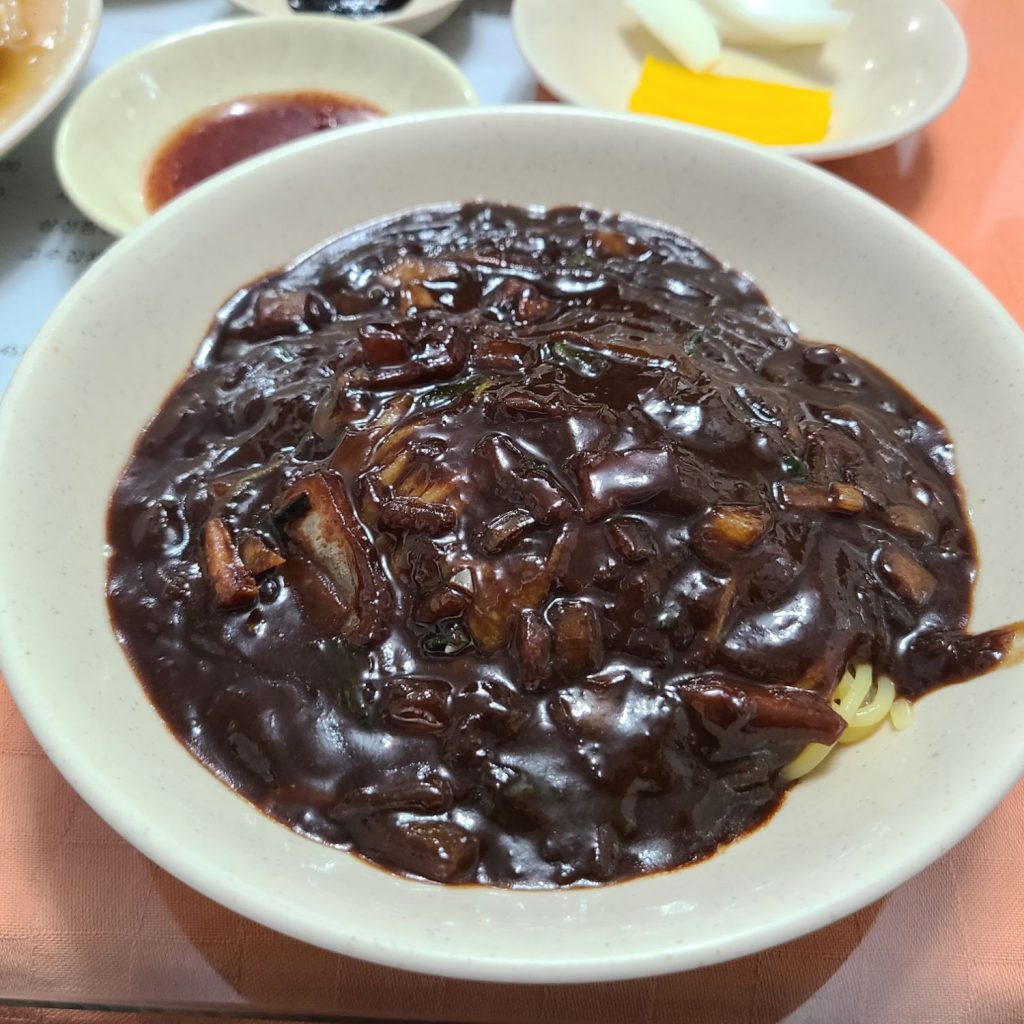
Introduction
Korean-style Chinese food, a unique fusion that marries the rich flavors of Chinese culinary traditions with Korea’s distinct taste preferences, has become a beloved staple in both countries. Among its most famous dishes are Jjajangmyeon, Jjamppong, and Tangsuyuk, each with a story as flavorful as the dishes themselves. This blog dives into the origins and essence of these culinary delights, inviting you to explore the cultural blend that makes Korean-style Chinese cuisine irresistibly fascinating.
The Journey of Jjajangmyeon: From Chinese Ports to Korean Hearts
Origin Story: Jjajangmyeon’s journey began in the late 19th century when Chinese immigrants from the Shandong province settled in Incheon, Korea. Originally, it was a dish called “Zhajiangmian” in China, made with wheat noodles topped with a salty fermented soybean paste. The Korean adaptation, known as Jjajangmyeon, transformed the sauce into a sweeter, less salty version, incorporating caramel, vegetables, and diced pork, catering to Korean palates.

Cultural Significance: Today, Jjajangmyeon is not just food; it’s a cultural phenomenon in Korea, symbolizing comfort and celebration. It’s famously consumed on Black Day (April 14th), when singles gather to enjoy this dish, celebrating or commiserating their solo status.
The Fiery Embrace of Jjamppong: A Tale of Spices and Seas

Origin Story: Jjamppong, a spicy seafood noodle soup, traces its roots to the Chinese immigrants in Korea. It’s believed to be inspired by the seafood soups of China’s eastern coastal regions, adapted in Korea to feature a spicier broth, brimming with chili oil, and an abundant mix of seafood, such as shrimp, squid, and mussels, alongside vegetables.
Cultural Significance: The dish’s fiery nature has made it a favorite among those seeking warmth and comfort during Korea’s cold winters. It symbolizes the Korean love for heat, both in terms of temperature and spice, offering a hearty embrace in a bowl.

Tangsuyuk: The Sweet and Sour Symphony
Origin Story: Tangsuyuk is Korea’s take on the Chinese dish Tangcu Liji, which is sweet and sour pork. The Korean version often uses pork or beef, deep-fried in a light batter and then coated with a glossy, sweet, and sour sauce made from vinegar, sugar, and various fruits. The dish has been tailored to suit Korean tastes, with a balance of flavors that pleases the palate without overwhelming it.
Cultural Significance: Tangsuyuk serves as a testament to the Korean penchant for harmony in dishes—balancing sweet, sour, and crispy textures. It’s a popular choice for family gatherings and celebrations, symbolizing joy and togetherness.
Conclusion: A Culinary Crossroads
The stories of Jjajangmyeon, Jjamppong, and Tangsuyuk are vivid examples of culinary adaptation and cultural integration. These dishes, born from the mingling of Chinese immigrants and Korean tastes, have grown beyond their origins to become symbols of a shared culinary heritage. They reflect the dynamic nature of food, its ability to adapt, and its power to bring people together across cultures.


Korean-style Chinese cuisine invites us to explore the depths of flavor and history, reminding us that food is more than sustenance—it’s a narrative of migration, adaptation, and celebration. As we savor each bite, we partake in a story centuries in the making, a delicious testament to the enduring bonds between cultures and the continuous evolution of culinary traditions.
Engage With Us
Have you tried making any of these dishes at home? Or perhaps you have a memory tied to Jjajangmyeon, Jjamppong, or Tangsuyuk? Share your stories and experiences in the comments below. Let’s celebrate the rich tapestry of Korean-style Chinese cuisine together!



0 Comment